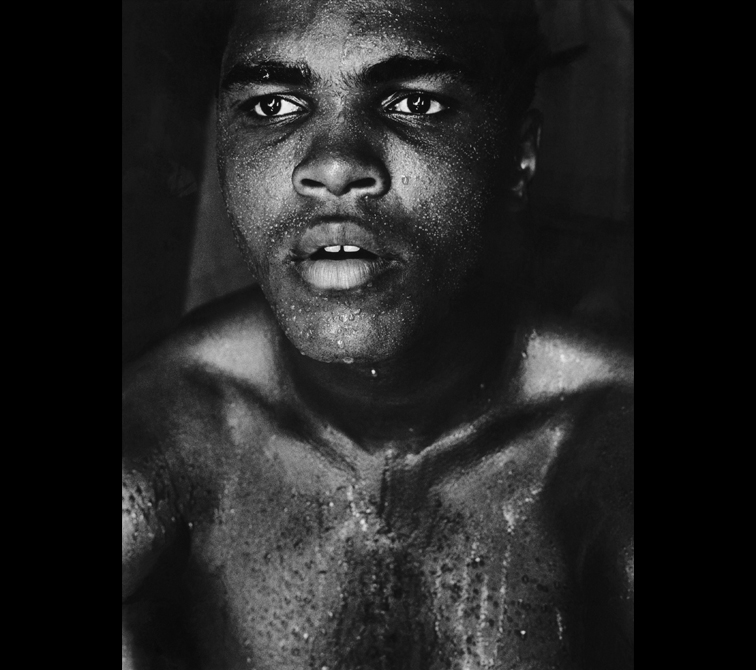
The fact that Parks has photographed Ali at an angle where the proximity is close, contrasting to how athletes were normally captured on camera, as Parks was able to capture such an intimate moment of Ali during a fight.
The black and white, as well as the lighting directed towards his face, is able to highlight details such as the sweat dripping down his face and neck, emphasising the momentous tension and suspense. Gordon Parks may have wanted to portray the sweat as a symbol of the strain and pressure Ali experienced—including when he changed his name—when he sought to represent himself (and later, a whole community) as a figure that was as dominant and powerful as his white coequals—while being a black muslim man.
His expression, serious, looking somewhere other than the camera, expresses that his concentration and focus is elsewhere, enhancing the profoundness of this photo. It embodies, or represents, the role he played in generating discussion, voices, and action to promote civil rights. As I observe the photo more and more, I’m beginning to see slight traces of worry in his expression, which is completely opposite to the conventional method of portraying athletes : unbreakable humans who were capable of perfection and strength to a whole new standard. This photo, as powerful as it is, also seems to contain elements that represent Ali as an ordinary human being, which is a weighty decision, of Gordon Parks, to make considering the extent to which Ali was admired by the rest of the world.
In one way, the photo is capturing Ali to be the figure that everyone knew him as : a strong, determined athlete. On the other hand, it reveals him as a confrontational presence during a period of controversy and division, someone who people should be prepared to listen to, someone people should respect.

